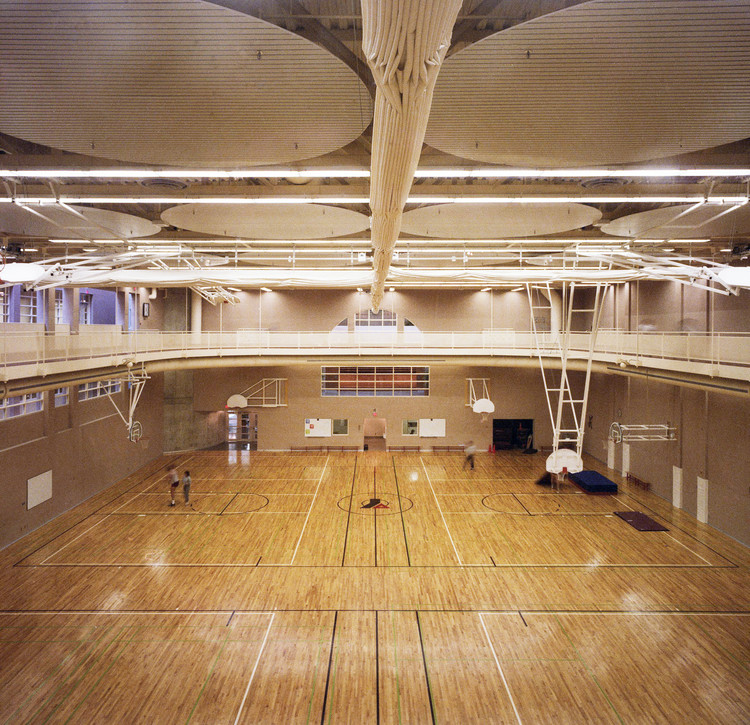AD Classics Chilehaus Fritz Höger
2011-08-09 00:00
架构师提供的文本描述。当亨利·B·斯洛曼(HenryB.Sloman)离开汉堡前往智利,一个穷人,几十年后带着他新获得的财富回到这座城市时,他就想到了智利。回国后,他决定要给家乡一些东西,于是他委托建筑师弗里茨·霍格(Fritz H Ger)设计智利豪斯(Chilehaus),以斯隆在智利的成功而得名。
Text description provided by the architects. The idea for the Chilehaus came when Henry B. Sloman left Hamburg for Chile a poor man and returned to the city decades later with his newfound fortune. Upon his return, he decided that he wanted to give something back to his hometown, and so he commissioned architect Fritz Höger to design the Chilehaus, named for Sloman’s success in Chile.
建成于1924年,智利很快成为砖块表现主义建筑和第一次世界大战后汉堡经济复苏的象征。
Completed in 1924, the Chilehaus quickly became a symbol of both Brick Expressionism architecture and Hamburg’s economic revival post World War I.
为了完全填满斯隆曼位于汉堡商业区中心的不规则地块,霍格设计了智利豪斯,以模仿客轮的形状。
In an attempt to completely fill Sloman’s irregularly-shaped plots of land located in the center of Hamburg’s business district, Höger designed the Chilehaus to mimic the shape of a passenger ship.
这栋建筑的上层有三层阳台,看起来像船甲板,而这栋建筑的东侧以其独特的尖而闻名,它就像一艘船的船头。南面的外立面也轻轻地与街道的边缘弯曲,给人的印象是一艘船的一侧。
The building has three tiered balconies on the upper floors meant to look like ship decks, and the eastern edge of the building is famous for its unique, pointed tip that resembles a ship’s prow. The southern façade also gently curves with the bordering street, giving the impression of the side of a ship.
虽然智利豪斯今天被认为是一部建筑杰作,但霍格在结构设计上遇到了许多障碍。由于场地地形恶劣,必须在钢筋混凝土桩上建造16米深的钢筋混凝土桩。由于这座建筑离易北河很近,所以大楼的地窖也必须特别密封。
Although the Chilehaus is today regarded as an architectural masterpiece, Höger faced many obstacles in the design of the structure. The site’s difficult terrain made building on reinforced-concrete pilings that ran 16 meters deep into the ground necessary. And because of the building’s close proximity to the Elbe River, the building’s cellar also had to be specially sealed.
即使是建筑物的取暖设备也受到沉箱的保护,沉箱可以漂浮在建筑物内,以防止洪水对水的破坏。
Even the building’s heating equipment was protected by caissons that could float within the building to help prevent water damage in the event of a flood.
然而,霍格的所有努力并没有徒劳无功。这栋建筑480万块深色的奥尔登堡砖块吸收了阳光,给建筑带来了一种不同的,但始终是辉煌的,在整个一天的不同时间发光。
All of Höger’s efforts, however, were not in vain. The building’s 4.8 million dark Oldenburg bricks absorb the sunlight, giving the building a different, yet always magnificent, glow at various times throughout the day.
它有超过2,800扇窗户,每个窗户提供了一个新的,令人敬畏的景观,一些最著名的景点在汉堡市。它还有三个入口大厅,作为欢迎公共空间。作为一个整体,该建筑的位置和设计都有助于提醒游客其作为城市中心和港口之间的过渡地带的象征作用。
It has over 2,800 windows, each of which offers a new and awe-inspiring view of some of the most scenic places in the city of Hamburg. It also has three entrance halls that serve as welcoming public spaces. As a whole, both the building's location and design helps to remind visitors of its symbolic role as a transition zone between the city center and port.
建成后,智利豪斯迅速成为城市居民和游客都喜欢的地标。霍格对功能、历史背景和工艺的关注远远不止是一座杰出的建筑;它被公认为一座建筑纪念碑,目前正在等待教科文组织世界遗产暂定名单上的批准。
After its completion, the Chilehaus quickly became a popular landmark for city-dwellers and tourists alike. Höger’s attention to function, historical background and craftsmanship has resulted in much more than just an outstanding building; it is recognized as an architectural monument and is currently waiting for approval on the UNESCO World Heritages Tentative List.
 举报
举报
别默默的看了,快登录帮我评论一下吧!:)
注册
登录
更多评论
相关文章
-

描边风设计中,最容易犯的8种问题分析
2018年走过了四分之一,LOGO设计趋势也清晰了LOGO设计
-

描边风设计中,最容易犯的8种问题分析
2018年走过了四分之一,LOGO设计趋势也清晰了LOGO设计
-

描边风设计中,最容易犯的8种问题分析
2018年走过了四分之一,LOGO设计趋势也清晰了LOGO设计
























































